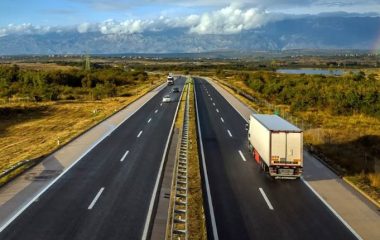
Photo: Ørsted
The Hornsea 2 wind power plant, located off the United Kingdom’s east coast, started delivering electricity to the mainland. When fully operational, the facility will have a capacity of 1.3 GW, or 2.5 GW together with Hornsea 1, currently the world’s biggest offshore wind farm.
The world’s largest offshore alternating current (AC) substation and a reactive compensation station (RCS) were installed in October off the Yorkshire coast in the North Sea for Ørsted’s Hornsea 2 project. The Denmark-based company has just announced that the first wind turbines started delivering electricity, noting the facility would be the largest of its kind in the world when it is finished next year.
Hornsea 2, at 89 kilometers from the shore and with a planned capacity of 1.3 GW, is located next to Hornsea 1, currently the global champion with 1.2 GW. Hornsea 2 will comprise 165 Siemens Gamesa’s turbines of 8 MW each. Together, the two projects will produce enough electricity for well over 2.3 million homes, the company claims.
Ørsted is working to complete Hornsea 2 next year while developing the subsequent two phases
The new system will have 390 kilometers of offshore and 40 kilometers of onshore cables which terminate at the onshore substation in Killingholme in Lincolnshire, at the United Kingdom’s east coast.
The Hornsea 3, with an estimated capacity of at least 2.4 GW, and Hornsea 4 are already in the pipeline, in different stages of development, Ørsted said. They should all be located in the same area.
The UK is betting big on offshore energy – it is home to the world’s biggest offshore units with wind turbines that have fixed bottoms and floating wind turbines and the largest tidal turbine
“From here, we have the finishing line in sight as we install the remaining turbines and continue testing, commissioning, and energizing our wind farm into the new year,” Hornsea 2’s Programme Director Patrick Harnett said.
The UK targets 40 GW in offshore wind by the end of the decade. The country is also leaning on the emerging technologies for floating wind power plants and tidal power plants. The world’s largest systems in the two categories are located off Britain’s shores.
“Climate change is one of the biggest threats facing the world today, and we believe that the solution lies in deploying renewable energy resources on a much larger scale than anything we have seen so far. The UK is the global leader in offshore wind, and our Hornsea projects have helped pave the way for the next generation of offshore wind farms,” according to Ørsted’s country head Duncan Clark.









How much land was required to build the Hornsea 1 & 2 wind power plant and how much capital was required to cover all cost to build them?incase concerned about purpose of research is based on upcoming business plan for renewable energy in Africa.